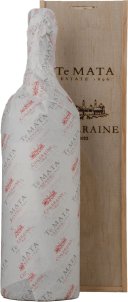Chateau Giscours 3me cru classe
Chateau Du Tertre 5me cru classe
With a history dating back to 1143, Chateau du Tertre is one of the oldest properties in Bordeaux. Since 1995 it has been in the hands of the Jelgersma family, also owners of Chateau Giscours. The du Tertre vineyard is a large single block, with 52ha under vine, planted to Cabernet Sauvignon (55%), Merlot (27%), Cabernet Franc (11%) and Petit Verdot (7%). Biodynamic viticultural techniques were being introduced beginning in 2008 and du Tertre was one of the first in Bordeaux to ferment grapes in egg-shaped concrete vats. The property produces a second wine, Les Hauts de Tertre, and from 2014 a dry white wine, Tertre Blanc, an unusual blend of Sauvignon Blanc, Chardonnay, Viognier and Gros Manseng. This Margaux property was classified Cinquieme Cru (Fifth Growth) in 1855.
Chateau Batailley 5me cru classe
Chateau Batailley is a highly regarded 5th growth classified estate, located in the appellation of Pauillac on the left bank of Bordeaux. Owned by the Castéja family of négociants Borie-Manoux, it is one of the oldest estates in the Médoc. A Cabernet Sauvignon dominant blend with smaller components of Merlot, Cabernet Franc and Petit Verdot, it is a solid, classically structured mid-weight Pauillac displaying fresh notes of cassis and a backbone of fine-grained tannins.
Chateau Grand-Puy-Lacoste 5me cru classe
The first grape plantings on what we know as Chateau Grand Puy Lacoste date from the 1500s and the property began to take its present shape in the 1700s. The beautiful château itself, still in use, was built in the second half of the 19th Century. Grand-Puy-Lacoste was classified a Cinquième Cru (Fifth Growth) in the Bordeaux Classification of 1855. Vineyard area totals 55ha planted to Cabernet Sauvignon (75%), Merlot (20%) and Cabernet Franc (5%). Typically for Pauillac, deep, gravelly topsoil overlies a limestone base. The Grand Puy of the name is a low hill that interrupts the flat landscape. Owned by the prominent Borie family since 1978, the vineyard, cellars and winery have all been extensively renovated since 2004. The Grand Vin is classic Pauillac full bodied, tannic, concentrated and ageworthy, offering cassis, cedar, tobacco and truffle scents and a juicy mouthful of flavour. There is a second wine, Lacoste Borie.
Chateau Duhart-Milon-ROTHSCHILD 4me cru classe
Chateau Duhart-Milon is a fourth growth (Quatrième Cru Classé) estate in the Pauillac appellation of Bordeaux. Part of the Domaines Barons de Rothschild, the wine is made by the same winemaking team as Chateau Lafite. A blend of Cabernet Sauvignon with a substantial component of Merlot, the Grand Vin is matured for 18 months in approximately 50% new French oak barriques. Chateau Duhart-Milon is typically a sturdy solid Pauillac with firm structure and earthy savoury richness.
St Hugo Vetus Purum Cabernet Sauvignon
The nose is intense and multi-faceted. Notes of blackcurrant and cedar are interwoven into a sophisticated expression that constantly intrigues. Harmony and balance are immediately apparent in this elegant, medium to full-bodied wine. The palate is assertive yet refined, with concentrated flavours of blackcurrant, berry and olive supported by subtle cedar spice from the oak. This is a premium Cabernet Sauvignon reflecting the unique terroir and pristine environment of the Coonawarra.
Yering Station Cabernet Sauvignon
Compelling and convincing, with florals, currants and blackberries, not too sweet; it has a savoury edge, with the oak seamlessly integrated. Perfectly ripe tannins with poise and presence ensure that this is lovely now, but will be more so in years to come.
Woodlands Clémentine Eloise Cabernet Sauvignon
WOODLANDS Clémentine Eloise Cabernet Sauvignon, Margaret River
Te Mata Estate Coleraine Cabernet Merlot
Te Matas Hawkes Bay estate is a prestigious winery with a rich history, producing some of New Zealands most celebrated wines. If the Langtons Classification crossed the Tasman, Te Mata Coleraine would sit alongside Grange at its very pinnacle. Established, esteemed, outstanding vintage after vintage, the glowing adjectives come thick and fast.
Moss Wood Moss Wood Vineyard Cabernet Sauvignon
Moss Wood Moss Wood Vineyard Cabernet Sauvignon, Margaret River Moss Wood is one of the Margaret River originals (planted 1969; first vintage 1973) and this iconic flagship wine Langtons Classified since 1990 has long been Western Australias leading Cabernet Sauvignon. Figures from the cellarage company Wine Ark show that it consistently rates as Australias Most Collected Cabernet. Moss Wood Cabernet Sauvignon is intensely perfumed and finely structured with cassis-blackcurrant aromas, hints of cedar and touches of violet. The oak and fruit are neatly balanced. With proven ageing potential the wine develops subtle earth/demi-glace briar characters on the bouquet, and complexity and suppleness on the palate. The unirrigated and widely spaced vineyard (now 14.86-hectares) is planted on gentle north-east facing slopes with sandy loams to a gravelly red/brown loams over clay. Typically the fruit is hand-picked, de-stemmed into open tanks and hand-plunged four times a day until completion of fermentation. At the end of vinification, the wine is allowed to macerate for around 10 to 14 days prior to pressing off into barrel. The wine is matured in 30% new and seasoned French oak barriques for 24 months.















